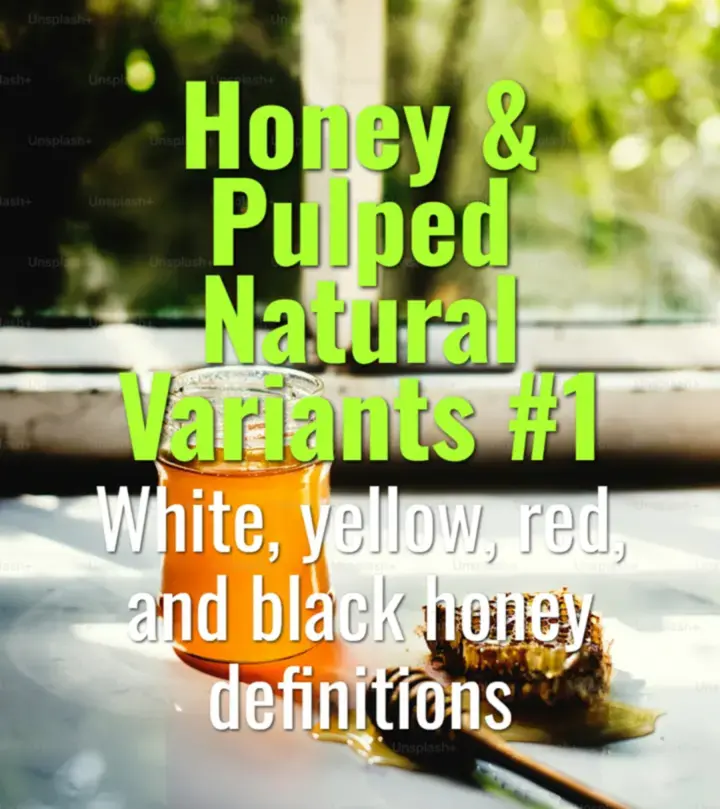White, yellow, red, and black honey definitions
This topic explains the color-coded honey process variants—white, yellow, red, and black—how they differ in mucilage retention and drying practices, and how these differences influence flavor outcomes.
- Coffee Basics Nerds
- 2 min read
Article 1 of 12 in Honey & Pulped Natural Variants/

What is the Honey Process?
- A hybrid method between washed and natural processing.
- Cherries are depulped but some mucilage (sticky layer) remains on the beans during drying.
- The amount of mucilage left and drying conditions determine the honey process type.
Honey Variants
1. White Honey
- Mucilage left: Very little (10–20%).
- Drying: Faster drying, usually in full sun.
- Flavor: Cleaner profile, closer to washed; bright acidity, lighter body.
2. Yellow Honey
- Mucilage left: Moderate (25–50%).
- Drying: Managed with frequent turning, exposed to more sunlight.
- Flavor: Balanced—sweetness with moderate acidity and body.
3. Red Honey
- Mucilage left: Higher (50–75%).
- Drying: Slower, cherries may be shaded part of the day to preserve moisture.
- Flavor: Sweeter, more fruit-forward, with syrupy body.
4. Black Honey
- Mucilage left: Maximum (75–100%).
- Drying: Very slow, often under shade or controlled environments.
- Flavor: Intense fruitiness, winey notes, heavy body; highest risk of defects if mishandled.
Why the Colors?
- The terms (white, yellow, red, black) describe how the beans look during drying:
- Less mucilage → lighter color.
- More mucilage → darker, stickier beans.
Quality & Risk Trade-offs
- White/Yellow: Lower risk, cleaner cups, easier to manage.
- Red/Black: Higher sweetness and complexity but greater risk of over-fermentation and mold.
Regional Use
- Particularly popular in Costa Rica, El Salvador, Honduras, and Nicaragua.
- Producers use honey processing to diversify profiles and appeal to specialty buyers.
Lasting Importance
White, yellow, red, and black honey processes showcase how controlled mucilage retention and drying can shape flavor diversity. They offer farmers flexibility to create unique cup profiles while adapting to climate and market demands.
You might also like:
- Tags:
- Lasting Importance
- Specialty Buyers
- Acidity Body
- Natural Processing
- Lighter Body
- Cup Profiles
- Red Black
- Bright Acidity
- Black Honey
- Fruit Forward
- White Yellow
- Honey Processing
- Heavy Body
- Frequent Turning
- Trade Offs
- Honey Processes
- Washed Natural
- Balanced Sweetness
- El Salvador
- Red Honey
- Costa Rica
- Yellow Honey
- Risk Defects
- Drying Conditions
- Yellow Red
- Faster Drying
- Mucilage Retention
- Sweetness Complexity
- Flavor Diversity
- Syrupy Body
- White Honey